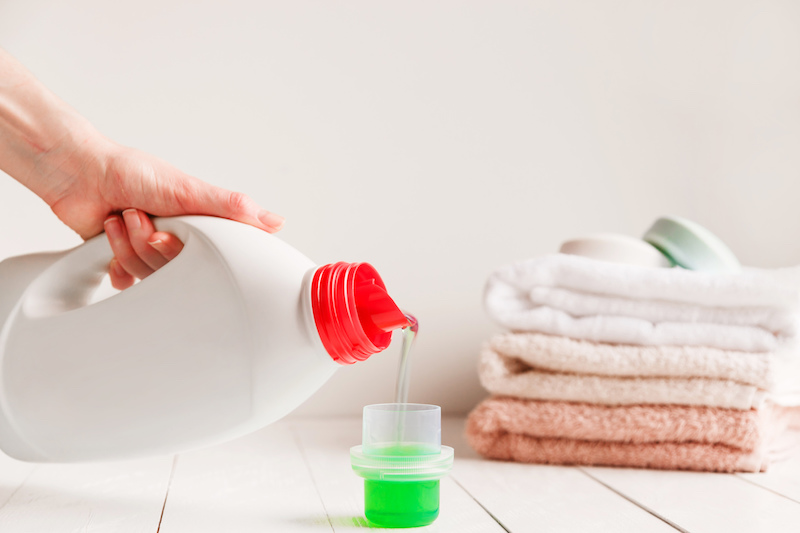Washing clothes is an essential household chore that we all have to do regularly. However, with the number of fabric wash and care products available in the market nowadays, it can get confusing to choose what is best for different types of fabrics.
Types of Fabric Wash Products
There are primarily three main types of fabric wash products – detergents, fabric softeners and stain removers. Let’s take a detailed look at each:
Detergents
Detergents are the main cleansing agents used for washing clothes in the washing machine. They come in powder, liquid and concentrated forms. Powder detergents are generally more economical for large loads while liquid detergents are more convenient for smaller loads. Concentrated detergents offer great value as they produce the same cleaning as regular detergents but using less product.
When choosing a detergent, consider the fabric type of your clothes. For example, delicate fabrics like silk require a mild, non-bio powder detergent. For everyday clothes made from cotton and synthetics, a regular powder or liquid detergent will suffice. Heavily soiled clothes might need an extra powder detergent or pre-wash treatment. It’s also important to follow dosage instructions on the package.
Fabric Softener
Fabric softeners are added during the rinse cycle to reduce static cling and make fabrics feel soft and fluffy. They come in liquid or dryer sheet form. Liquid softeners are added directly into the rinse dispenser drawer while dryer sheets are placed inside the dryer during the drying cycle.
Fabric softeners work best on cotton and synthetic materials. They should be avoided for delicate fabrics like silk as the ingredients can damage the fibers over time. Wool items shouldn’t be tumble dried as the moisture can cause them to shrink. For hard water areas, opt for a softener with water softening agents.
Stain Removers
Stain removers are essential products for pre-treating tough, set-in stains before washing. They are formulated to target specific types of stains like grease, food, ink, wine, etc. Always check the stain remover label to ensure it’s safe for your fabric before application. For severe stains, it’s better to use a stain remover paste or pretreatment spray rather than a liquid-type product.
Choosing the Right Product for Different Fabrics
Not all fabric wash products are suitable for washing all fabrics. Here are some guidelines on choosing the best options for common fabric types:
Cotton and Linen: Regular powder or liquid detergent works well for cotton and linen clothes. An oxy-powder detergent can be used for heavily soiled loads. Fabric softener keeps cotton clothes soft.
Synthetics: Liquid detergent is usually sufficient to clean synthetic items like polyester and nylon. Avoid fabric softener which can cause these materials to mat over time.
Delicate Fabrics: Opt for a delicate or hand wash detergent formulated for silks, wool and other delicate fabrics. Avoid chlorine bleach and fabric softener. Hand wash or machine wash on a gentle cycle when possible.
Denim: Use a regular detergent but avoid fabric softener that can cause loss of color intensity over time. Consider a specialty denim detergent for heavily worn jeans.
Sportswear: Look for a sportswear detergent or an anti-bacterial detergent that eliminates odors from activewear. Fabric softener isn’t necessary.
Children’s Clothes: Use a mild, dye-transfer inhibiting detergent. Consider an odor-eliminating additive for clothes that see daily wear and washing.
Stained Clothes: Pre-treat stains using the appropriate stain remover before regular washing. This increases the chances of stain removal without damaging fabrics.
Other Tips for Fabric Care
In addition to using the right wash products, follow some general fabric care tips:
– Sort clothes by color and care instructions before loading the washer
– Wash in cold water unless tag specifies otherwise
– Avoid overfilling the washer
– Dry in shade to prevent fading for sun-sensitive colors
– Remove promptly from dryer to prevent wrinkles
– Store in a cool, dry place to reduce mold and musty odors
– Mend rips and tears to extend garment life
– Replace worn-out elastic in undergarments and waistbands
– Refresh between washes with an antibacterial spray
With the multitude of fabric wash options available today, selecting the suitable product plays a key role in maintaining your clothes and extending their lifespan. Always check fabric care tags and choose products specifically formulated for different fabric types. Following some general laundry best practices can also help keep your clothes looking fresh for longer.
*Note:
1. Source: Coherent Market Insights, Public sources, Desk research
2. We have leveraged AI tools to mine information and compile it



